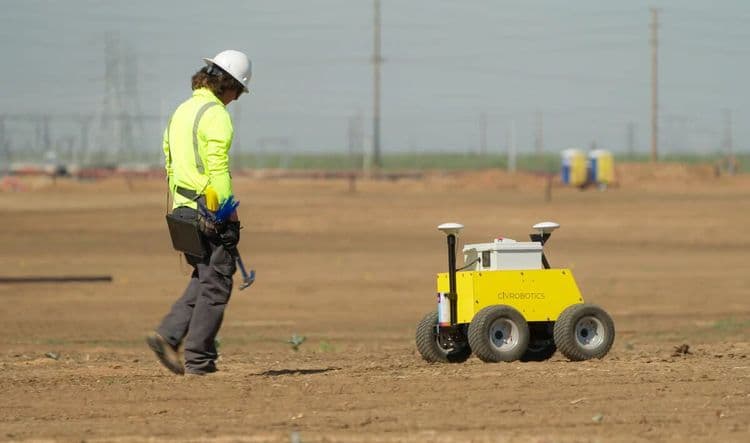VEMAC, a forward-thinking construction company, has always sought cutting-edge solutions, driving innovation in concrete and tilt-up construction. Faced with time-consuming manual layout processes and increasing labor shortages, VEMAC turned to CivDot+ by Civ Robotics—a decision that transformed their workflow, increased speed, and attracted a new generation of workers to the industry.
Challenges: A Lengthy, Multi-Step Process
Before implementing CivDot+, VEMAC relied on a multi-step process for concrete foundation layout. Surveyors would first mark initial points, and then foremen had to manually reinterpret and extend the layout—leading to delays, inefficiencies, and room for human error.
“There was a time when laying out tilt panels took longer than actually building them" - David, President of VEMAC.
The growing demand for rapid and precise foundation layouts pushed the team to explore automation as a solution.
At the same time, surveyors were constantly overwhelmed with requests from different crews needing layout at the same time.
Abraham Loya, Project Manager at VEMAC, explained: "We had multiple teams calling us for layout at once. It wasn’t just one job—it was 10 to 15 active projects. Even after hiring more people, it was still too much to handle."
With the shortage of skilled workers adding to the challenge, VEMAC had to find a way to do more with fewer resources.
Solution: CivDot+ Implementation
To overcome these challenges, VEMAC integrated CivDot+, eliminating unnecessary steps and making the foundation layout a one-step process. Now, a single operator completes the layout in a fraction of the time, ensuring points are marked accurately in one go.
Speed and Efficiency Gains:
The impact was immediate. Tasks that once took two full days are now completed in just a few hours. “Speed and efficiency—that’s what it’s all about,” said David.
The time saved allows foremen to shift their focus from layout work to quality control. Instead of spending long hours in the field marking points for concrete slabs, crews now verify and back-check work more efficiently, ensuring better accuracy across projects.
Empowering a New Generation of Workers:
Beyond efficiency, CivDot+ also addresses VEMAC’s labor shortage challenge. Traditional surveying jobs require extensive fieldwork, often deterring young professionals from joining the industry.
With CivDot+, surveyors spend only two hours outside instead of an entire day, making the role far more appealing to college-educated engineers who prefer a mix of office and fieldwork. “This technology helps us attract new talent,” David explained. “Would you rather work eight hours in the sun or spend six hours in the office and just two hours in the field? The choice is obvious.”
Abraham noted how CivDot+ made construction more exciting for younger workers:
"This isn’t just about efficiency—it’s about making construction a job that people actually want to do. Robotics makes the work more engaging and enjoyable, which is a game-changer in an industry struggling with hiring."
Simplifying Training & Expanding Opportunities:
In the past, new surveying crew members needed three to six months of training to master foundation layout work. With CivDot+, operators can be fully trained in under an hour, allowing even those with no prior experience to contribute to projects from the get-go.
“This completely changed how we work—for the better,” said Julio Primero, Lead Surveyor at VEMAC.
“We can now train new hires faster, cut labor costs, and double-check our work more frequently to prevent mistakes.”
Additionally, by automating repetitive tasks, VEMAC was able to reinvest time and cost savings into employee incentives and new technology, boosting team morale and production output.
A Future-Ready Partnership:
VEMAC’s adoption of CivDot+ represents more than just a shift in technology—it marks a cultural shift in construction, embracing robotics to optimize efficiency, reduce labor dependency, and modernize workflows.
With CivDot+, VEMAC has positioned itself at the forefront of construction innovation, proving that speed, accuracy, and workforce development can go hand in hand.

VEMAC offers an invaluable wealth of 17 years of construction expertise, seamlessly integrated into construction project teams through every stage, from predevelopment to design/build to general Construction.
Use Case: CivDot+
Projects with CivDot+: Numerous
Project Size: 400K - 500K Sq ft
Discover the power of CivDot+

